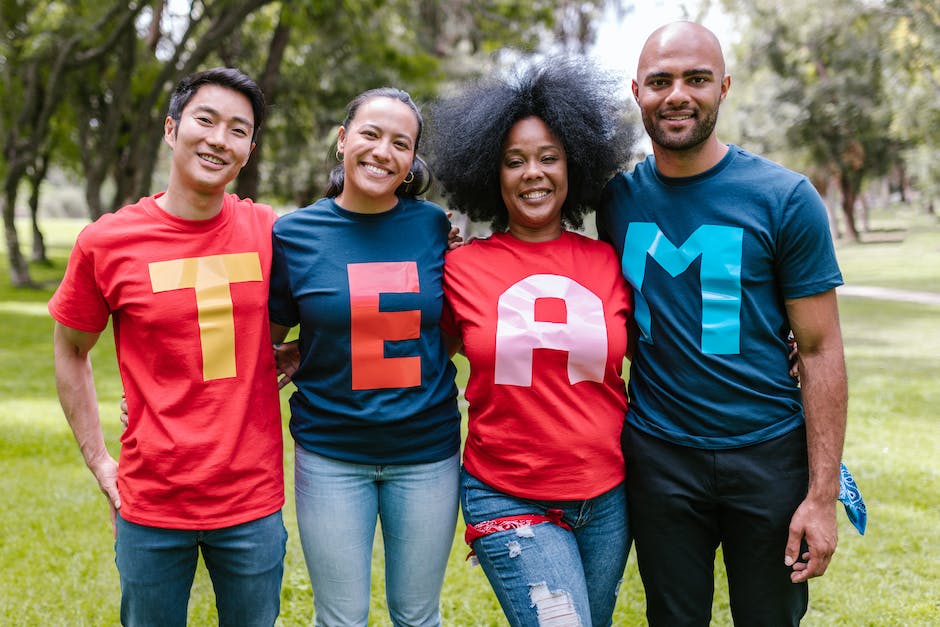Table of Contents
- Introduction
- The Benefits of Cultural Diversity in Promoting Innovation and Creativity
- How Cultural Diversity Enhances Problem-Solving and Decision-Making Processes
- The Role of Cultural Diversity in Fostering Collaboration and Teamwork for Innovative Solutions
- Overcoming Challenges and Maximizing the Potential of Cultural Diversity in Driving Innovation and Creativity
- Q&A
- Conclusion
Unleashing Boundless Possibilities through Cultural Diversity.
Introduction
Introduction:
“The Impact of Cultural Diversity on Innovation and Creativity”
Cultural diversity refers to the presence of multiple cultures and ethnicities within a society or organization. In recent years, there has been growing recognition of the significant impact that cultural diversity can have on innovation and creativity. This impact stems from the unique perspectives, experiences, and knowledge that individuals from different cultural backgrounds bring to the table. By fostering an environment that embraces and values cultural diversity, organizations can unlock a wealth of innovative ideas and solutions. This paper explores the various ways in which cultural diversity influences innovation and creativity, highlighting the benefits it brings and the challenges that may arise.
The Benefits of Cultural Diversity in Promoting Innovation and Creativity

Cultural diversity has become an increasingly important topic in today’s globalized world. As societies become more interconnected, the need to understand and appreciate different cultures has become crucial. One area where cultural diversity has a significant impact is in promoting innovation and creativity. In this article, we will explore the benefits of cultural diversity in fostering innovation and creativity.
Firstly, cultural diversity brings together individuals with different perspectives and experiences. When people from different cultural backgrounds come together, they bring with them unique ways of thinking and problem-solving. This diversity of thought can lead to the generation of new ideas and innovative solutions. Research has shown that diverse teams are more likely to come up with creative solutions compared to homogeneous teams.
Furthermore, cultural diversity encourages the exchange of knowledge and ideas. When individuals from different cultures work together, they share their knowledge and experiences, leading to a broader understanding of the world. This exchange of ideas can spark creativity and innovation as individuals learn from each other’s perspectives. For example, a team consisting of individuals from different countries may approach a problem from various angles, resulting in a more comprehensive and innovative solution.
Moreover, cultural diversity fosters a culture of inclusion and acceptance. When individuals from different cultures work together, they learn to appreciate and respect each other’s differences. This inclusive environment creates a sense of psychological safety, where individuals feel comfortable expressing their ideas and taking risks. In turn, this psychological safety promotes creativity and innovation as individuals are more willing to think outside the box and challenge conventional wisdom.
In addition, cultural diversity enhances problem-solving abilities. Different cultures have unique ways of approaching problems and finding solutions. When individuals from diverse backgrounds collaborate, they can draw upon these different problem-solving approaches, leading to more effective and innovative solutions. For example, a team consisting of individuals from Western and Eastern cultures may combine analytical thinking with holistic thinking to develop a comprehensive solution.
Furthermore, cultural diversity promotes adaptability and flexibility. Individuals from different cultures have often had to adapt to new environments and navigate unfamiliar situations. This adaptability translates into a willingness to embrace change and take risks, which are essential for innovation and creativity. Research has shown that individuals who have experienced cultural diversity are more likely to exhibit entrepreneurial behavior and engage in innovative activities.
Lastly, cultural diversity enhances market competitiveness. In today’s globalized economy, companies that can tap into diverse markets and understand different cultural nuances have a competitive advantage. By having a diverse workforce that reflects the diversity of their target markets, companies can better understand customer needs and preferences, leading to the development of innovative products and services.
In conclusion, cultural diversity has a profound impact on promoting innovation and creativity. By bringing together individuals with different perspectives and experiences, cultural diversity fosters the generation of new ideas and innovative solutions. It encourages the exchange of knowledge and ideas, creates an inclusive and accepting environment, enhances problem-solving abilities, promotes adaptability and flexibility, and enhances market competitiveness. Embracing cultural diversity is not only the right thing to do but also a strategic advantage for organizations seeking to thrive in today’s rapidly changing world.
How Cultural Diversity Enhances Problem-Solving and Decision-Making Processes
Cultural diversity is a powerful force that can greatly impact innovation and creativity within organizations. When individuals from different cultural backgrounds come together, they bring with them a wealth of unique perspectives, experiences, and ideas. This diversity can enhance problem-solving and decision-making processes, leading to more innovative and creative solutions.
One way in which cultural diversity enhances problem-solving is by promoting a broader range of perspectives. When a team is composed of individuals from different cultural backgrounds, they are more likely to approach problems from different angles. This diversity of perspectives can lead to a more comprehensive understanding of the problem at hand and can help uncover new and innovative solutions that may not have been considered otherwise.
Furthermore, cultural diversity can also enhance decision-making processes by challenging the status quo. When individuals from different cultural backgrounds come together, they bring with them different ways of thinking and different approaches to decision-making. This can help break down groupthink and encourage more critical and independent thinking. By challenging the status quo, cultural diversity can lead to more innovative and creative decision-making processes.
In addition to promoting a broader range of perspectives and challenging the status quo, cultural diversity can also enhance problem-solving and decision-making processes by fostering a culture of collaboration and open-mindedness. When individuals from different cultural backgrounds come together, they are often forced to communicate and collaborate more effectively. This can lead to a greater exchange of ideas and a more open-minded approach to problem-solving and decision-making. By fostering a culture of collaboration and open-mindedness, cultural diversity can create an environment that is conducive to innovation and creativity.
Moreover, cultural diversity can also enhance problem-solving and decision-making processes by increasing the pool of available knowledge and expertise. When individuals from different cultural backgrounds come together, they bring with them different knowledge, skills, and experiences. This diverse pool of knowledge and expertise can be tapped into during problem-solving and decision-making processes, leading to more informed and effective solutions. By increasing the pool of available knowledge and expertise, cultural diversity can greatly enhance problem-solving and decision-making processes.
In conclusion, cultural diversity has a significant impact on innovation and creativity within organizations. By promoting a broader range of perspectives, challenging the status quo, fostering a culture of collaboration and open-mindedness, and increasing the pool of available knowledge and expertise, cultural diversity enhances problem-solving and decision-making processes. Organizations that embrace and value cultural diversity are more likely to experience greater innovation and creativity, leading to a competitive advantage in today’s global marketplace. It is therefore crucial for organizations to recognize the importance of cultural diversity and actively promote and support it within their teams.
The Role of Cultural Diversity in Fostering Collaboration and Teamwork for Innovative Solutions
Cultural diversity plays a crucial role in fostering collaboration and teamwork for innovative solutions. When individuals from different cultural backgrounds come together, they bring with them a wealth of unique perspectives, experiences, and ideas. This diversity can lead to increased creativity and innovation within teams, as it encourages the exploration of different approaches and solutions to problems.
One of the key benefits of cultural diversity in fostering collaboration is the ability to draw upon a wide range of knowledge and skills. Each individual brings their own set of expertise and experiences, which can be invaluable when working on complex projects. By combining these diverse perspectives, teams can develop more comprehensive and innovative solutions that may not have been possible with a homogeneous group.
Furthermore, cultural diversity can also enhance problem-solving abilities within teams. When faced with a challenge, individuals from different cultural backgrounds may approach the problem from different angles, drawing upon their unique cultural perspectives. This diversity of thought can lead to a more thorough analysis of the problem and the development of creative and innovative solutions.
In addition to enhancing problem-solving abilities, cultural diversity can also promote a more inclusive and supportive team environment. When individuals from different cultures work together, they are exposed to different ways of thinking and behaving. This exposure can lead to increased empathy and understanding among team members, fostering a sense of inclusivity and respect for different perspectives. In turn, this inclusive environment can create a safe space for individuals to express their ideas and contribute to the team’s overall creativity and innovation.
Moreover, cultural diversity can also challenge traditional ways of thinking and encourage individuals to think outside the box. When individuals from different cultural backgrounds come together, they bring with them different norms, values, and beliefs. These differences can lead to the questioning of established practices and the exploration of alternative approaches. By challenging the status quo, teams can push the boundaries of innovation and creativity, leading to breakthrough solutions that may have otherwise been overlooked.
However, it is important to note that cultural diversity alone is not enough to foster collaboration and teamwork for innovative solutions. Effective communication and collaboration strategies are essential to ensure that diverse teams can work together harmoniously. This includes creating an inclusive and respectful team culture, promoting open and transparent communication, and providing opportunities for individuals to share their perspectives and ideas.
In conclusion, cultural diversity plays a vital role in fostering collaboration and teamwork for innovative solutions. By bringing together individuals from different cultural backgrounds, teams can tap into a wealth of unique perspectives, experiences, and ideas. This diversity can lead to increased creativity and innovation, as it encourages the exploration of different approaches and solutions to problems. However, effective communication and collaboration strategies are essential to ensure that diverse teams can work together harmoniously. By harnessing the power of cultural diversity, organizations can unlock the full potential of their teams and drive innovation and creativity to new heights.
Overcoming Challenges and Maximizing the Potential of Cultural Diversity in Driving Innovation and Creativity
Cultural diversity has become increasingly recognized as a valuable asset in driving innovation and creativity within organizations. As the world becomes more interconnected, businesses are realizing the importance of embracing different perspectives and ideas from individuals with diverse cultural backgrounds. However, harnessing the full potential of cultural diversity can be challenging, requiring organizations to overcome certain obstacles and maximize the benefits it brings.
One of the main challenges in leveraging cultural diversity for innovation and creativity is the potential for misunderstandings and miscommunication. When individuals from different cultural backgrounds come together, they bring with them unique ways of thinking, communicating, and problem-solving. These differences can lead to misunderstandings and conflicts if not properly managed. To overcome this challenge, organizations must foster an inclusive and open environment that encourages effective communication and understanding among team members. This can be achieved through cross-cultural training programs, team-building exercises, and the establishment of clear communication channels.
Another challenge in maximizing the potential of cultural diversity is the tendency for individuals to gravitate towards those who are similar to them. People naturally feel more comfortable and at ease when interacting with others who share similar cultural backgrounds and experiences. This can lead to the formation of cliques or subgroups within diverse teams, hindering collaboration and the exchange of ideas. To address this challenge, organizations should promote a culture of inclusivity and actively encourage cross-cultural interactions. This can be done through team-building activities that foster a sense of belonging and shared purpose among team members.
Furthermore, cultural diversity can also pose challenges in terms of decision-making processes. Different cultural perspectives may lead to varying opinions and approaches to problem-solving. This can result in conflicts and difficulties in reaching consensus. To overcome this challenge, organizations should adopt a collaborative decision-making approach that values and incorporates diverse viewpoints. This can be achieved through the establishment of diverse decision-making teams, where individuals from different cultural backgrounds are given equal opportunities to contribute and influence the decision-making process.
Despite these challenges, cultural diversity has the potential to greatly enhance innovation and creativity within organizations. Research has shown that diverse teams are more likely to generate a wider range of ideas and solutions compared to homogeneous teams. This is because individuals from different cultural backgrounds bring unique knowledge, experiences, and perspectives to the table. By embracing cultural diversity, organizations can tap into this wealth of ideas and creativity, leading to more innovative and successful outcomes.
In conclusion, cultural diversity has a significant impact on innovation and creativity within organizations. While there are challenges to overcome, such as miscommunication, the formation of subgroups, and decision-making processes, the benefits of cultural diversity far outweigh the difficulties. By fostering an inclusive and open environment, promoting cross-cultural interactions, and adopting collaborative decision-making approaches, organizations can maximize the potential of cultural diversity in driving innovation and creativity. Embracing cultural diversity is not only a strategic advantage but also a reflection of the globalized world we live in today.
Q&A
1. How does cultural diversity impact innovation and creativity?
Cultural diversity fosters a variety of perspectives, experiences, and knowledge, leading to increased innovation and creativity.
2. What are some benefits of cultural diversity in relation to innovation and creativity?
Cultural diversity promotes the exchange of ideas, encourages different problem-solving approaches, enhances adaptability, and drives the development of unique and groundbreaking solutions.
3. Are there any challenges associated with cultural diversity in the context of innovation and creativity?
Yes, challenges may arise due to communication barriers, conflicting viewpoints, and difficulties in integrating diverse perspectives. However, effective management and inclusive practices can help overcome these challenges.
4. How can organizations leverage cultural diversity to enhance innovation and creativity?
Organizations can foster an inclusive environment, encourage collaboration and open dialogue, provide cross-cultural training, and promote diversity in leadership positions to harness the full potential of cultural diversity for innovation and creativity.
Conclusion
In conclusion, cultural diversity has a significant impact on innovation and creativity. It brings together different perspectives, experiences, and ideas, fostering a rich environment for innovation. By embracing cultural diversity, organizations can tap into a wider range of knowledge and creativity, leading to more innovative solutions and products. Additionally, cultural diversity promotes a more inclusive and collaborative work environment, which further enhances creativity and innovation. Therefore, organizations that prioritize and embrace cultural diversity are more likely to experience positive outcomes in terms of innovation and creativity.





Recent Comments